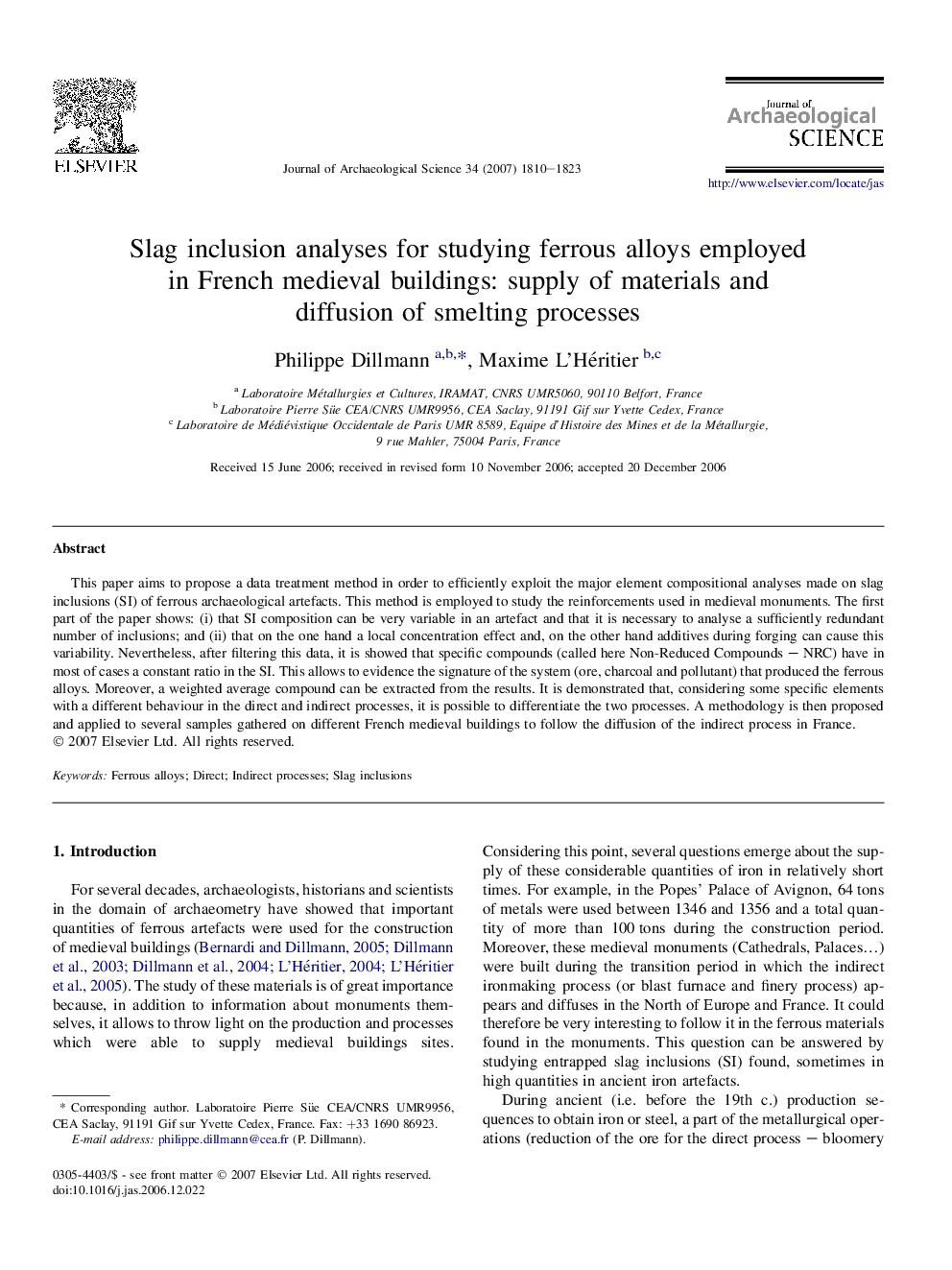| Article ID | Journal | Published Year | Pages | File Type |
|---|---|---|---|---|
| 1037605 | Journal of Archaeological Science | 2007 | 14 Pages |
This paper aims to propose a data treatment method in order to efficiently exploit the major element compositional analyses made on slag inclusions (SI) of ferrous archaeological artefacts. This method is employed to study the reinforcements used in medieval monuments. The first part of the paper shows: (i) that SI composition can be very variable in an artefact and that it is necessary to analyse a sufficiently redundant number of inclusions; and (ii) that on the one hand a local concentration effect and, on the other hand additives during forging can cause this variability. Nevertheless, after filtering this data, it is showed that specific compounds (called here Non-Reduced Compounds – NRC) have in most of cases a constant ratio in the SI. This allows to evidence the signature of the system (ore, charcoal and pollutant) that produced the ferrous alloys. Moreover, a weighted average compound can be extracted from the results. It is demonstrated that, considering some specific elements with a different behaviour in the direct and indirect processes, it is possible to differentiate the two processes. A methodology is then proposed and applied to several samples gathered on different French medieval buildings to follow the diffusion of the indirect process in France.
